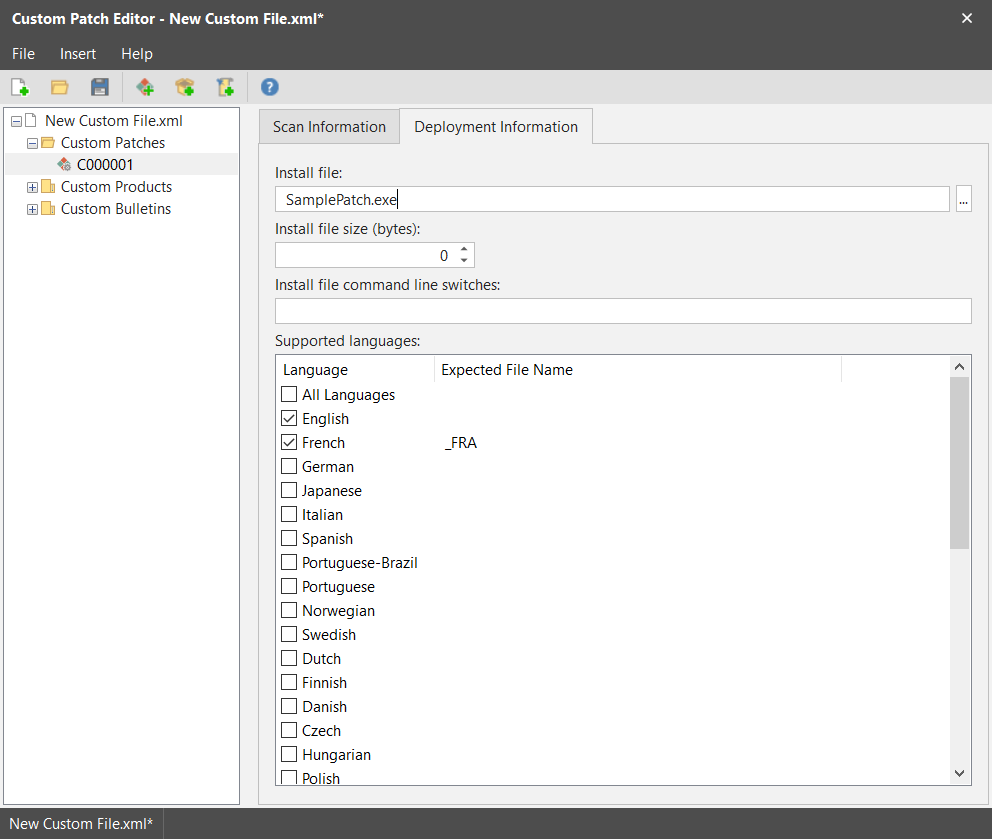Deployment Information Tab
When creating a custom patch, two major tabs are used in the right-hand pane. This topic describes the options contained on the Deployment Information tab.
|
Field |
Description |
|---|---|
|
Patch Install File |
Batch files (.bat and .cmd file formats) are not supported by the custom patch process and must not be used as a patch install file. This is the patch file that will be used when the conditions specified on the Scan Information tab are met. Specify just the file name here and not the full path name to the patch install file. This file is typically supplied by the vendor of the product you are patching. You can use the browse button to locate and select this file. Doing so will automatically populate the Patch Install File Size box. IMPORTANT! The actual file used in the patch process may have several different names and you must manually copy the files to every location the patch file is expected to reside, including the console and possibly one or more distribution servers. See the description of the Patch Supported Languages option for more information. |
|
Patch Install File Size (bytes) |
Specifies the size of the patch install file. This box is automatically filled in when you use the Browse button to select the Patch Install File. Providing the file size enables the program to accurately determine the progress during the installation process. |
|
Patch Install File Command Line Switches |
Specify any command line switches you want to use during the installation of the patch. For example, you might want a silent install (/quiet), you might want to dictate that the target machines are not restarted (/norestart), etc. |
|
Patch Supported Languages |
Enable the check boxes for the operating system languages you want to support with this custom patch. There are two reasons for doing this:
IMPORTANT! You must make as many copies of the file as is needed using the appropriate names and then make those files available everywhere the patch file is expected to reside. Example 1: Assume your vendor supplied two versions of the same patch, one for English language systems named SamplePatchENGLISH.exe and one for French language systems named SamplePatchFRENCH.exe. You must add the text shown in the Expected File Name column to the end of the associated patch file. In this example the updated file names would be SamplePatchENGLISH.exe and SamplePatchFRENCH_FRA.exe. (The English language patch does not require the suffix, although SamplePatchENGLISH_ENU.exe would also work.) You then place copies of each file in the console's patch download directory and on the appropriate distribution servers. Example 2: Assume your vendor supplied a patch file named SamplePatch.exe and that file supports English, French, and German language systems. You must make three copies of the file, rename them by adding the text shown in the Expected File Name column to the end of each file name, and then place copies of each file on the appropriate distribution servers. In this example the file names would be SamplePatch.exe, SamplePatch_FRA.exe, and SamplePatch_GER.exe. |
When complete, save and then validate the XML file (see Saving and Validating Your Changes).
